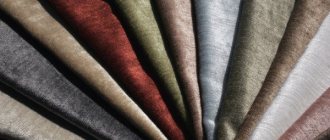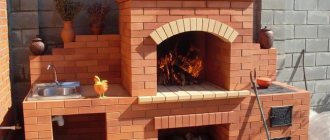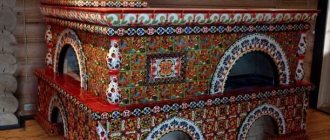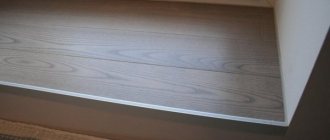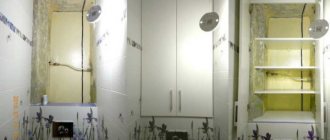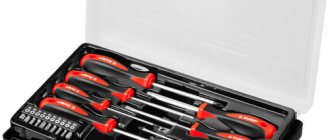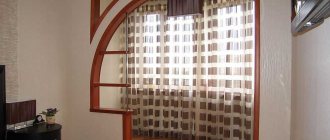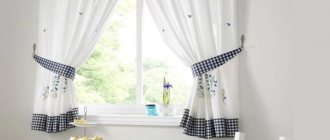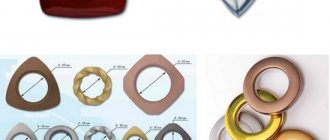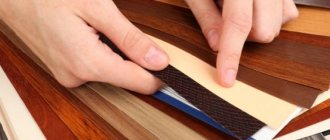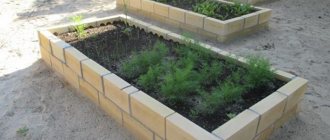The stove has been used for heating homes since ancient times. The demand for such a center is still observed today. When constructing houses and cottages, many developers often include the structure in the project. At the same time, they understand that the appearance of a traditional heat source is no less important than its functionality. Heat-resistant tiles for stoves and fireplaces are used as a finishing material.
If you can even use plasterboard, plastic panels imitating stone or brick to cover a false fireplace, then only special plates, mainly made of baked clay, are suitable for decorating heating devices. Manufacturers produce a wide range of products. The choice of a specific option depends on various factors - cost, manufacturer, compliance with the interior, personal preferences.
Fashionable tile solutions for stoves
During the time of all-Union gasification, happy residents of populated areas, who had the opportunity to use clean and fairly environmentally friendly blue fuel, enjoyed technical progress, installed all kinds of gas appliances and destroyed old stoves, forgetting that fashion was returning.
Times have changed. Blue fuel has increased in price. It is still popular and in demand, but the spirit of wood-burning stoves has long been missing for many.
Those who turned out to be smarter and did not touch the creations of their ancestors look at their old tiled, stone or simply made of refractory brick stoves with delight. It was these creations that became the prototypes of modern wood-burning fireplaces and stoves (regular and long-burning), which are now at the peak of popularity.
Functions
The furnace lining performs a number of specific functions:
- reducing the time required to heat the room;
- ensuring ease of maintenance of the device - cleaning tiles is much easier than, for example, a plastered surface;
- attractive decor;
- increase in heat transfer and heat capacity of the furnace;
- psychological aspect - according to most psychologists, the presence of a traditional stove in the house has a good effect on the general atmosphere in the home, as well as the mood of others.
Tiling a Russian stove
The Russian stove is a symbol of warmth, comfort, hospitality, delicious food - the central place of many folklore and original works. Nowadays, old stoves look like real valuable antique objects, as if they were moved from well-read and beloved pages from childhood.
Many are covered with beautiful plain or patterned tiles that have been well preserved. There are also old brick ones, but still functional. How to revive them with a beautiful finish? What should be taken into account?
Briefly about the main thing
There are several types of facing tiles: based on clay, natural or artificial stone. The material must be fireproof, heat-resistant, durable, not absorb moisture, conduct heat well and at the same time have an attractive appearance.
The building materials market offers models for every taste and budget: pretty terracotta and harsh fireclay tiles, amazing majolica and delicate faience, majestic marble and modest tiles, strict porcelain tiles and luxurious brooms.
There are two cladding technologies: glue and metal frame. The choice of tiles is made according to technical characteristics, taking into account markings, design and colors, and cladding technology according to the expected operating conditions.
Types of stoves, features affecting finishing
The most beautiful and durable material for lining stoves, which does not change its appearance for decades, are heat-resistant tiles specially designed for this purpose.
The facing material and the adhesive for attaching it must withstand high temperatures and temperature changes (if the stove is located in the yard). It is used for both brick and metal stoves.
The surface of the latter heats up very strongly and quickly. The heating rate of metal and tile is different, so decoration is possible using a special frame to which frames or slats for tiles are attached. It is impossible to place the tiles on the metal stove itself.
- Brick kilns come in single- and double-circuit types. Single-circuit ones are installed where significant temperature changes are possible (in the yard, in the bathhouse).
- The surface of single-circuit stoves heats up much more, so choosing tiles and heat-resistant adhesive must be done with special care.
- Combined materials are used: for areas of local overheating and for the rest of the area.
It is important that the finishing materials are of particularly high quality. In single-circuit furnaces, they perform a protective, strengthening, binding function, preventing possible deformation and destruction of the furnace.
Double-circuit stoves are considered to be of higher quality. Their outer surface heats up much less than the inner one. There are no local overheating areas. For such ovens, any heat-resistant tiles and suitable adhesives are suitable.
Laying rules
The stove is the focal point in the interior. It should always look beautiful and symmetrical. Cladding work is proceeding according to the preliminary plan. First of all, you need to decide on the type of installation and material, and calculate the required number of tiles. You can handle laying some types of plates yourself. For complex work with preliminary preparation of the base, the help of an experienced craftsman will be required. Installation of tile materials is carried out according to certain rules.
Which solution to choose for installation
Tile mortar can be purchased in powder or jelly form. The range of adhesive mixtures for lining furnaces is very diverse, which allows you to choose the appropriate option for a specific type of plate. They differ in composition and purpose as follows:
- Sand-cement mortar. Used for laying ceramic and gypsum tiles. The composition includes Portland cement, water, sand;
- Clay solution. Suitable for tiles, tiles, majolica. Composition: clay, water, fillers. Under the influence of high temperature, the material gains strength;
- A mixture of clay, sand, cement. It has a complex composition that complements liquid glass and ground chalk. Heavy tiles (marble, fireclay, porcelain stoneware) are placed on it;
- Mastic. Heat-resistant compounds are made from clay, cement, latex, bitumen with the addition of turpentine, and solvent. The proportions depend on the type of material and the method of its installation.
How to prepare the base
Stove tiles can only be laid on a flat surface. If it is an old fireplace, all layers must be removed, leaving a bare brick surface. The remaining mortar must be knocked out of the intermediate seams, going at least 1 cm deep. The work can be carried out manually using a metal brush or using a grinder and a special nozzle.
Now the base of the furnace must be cleaned of dust and treated with primer. The mixture is applied in several layers until it stops being absorbed. The reinforcing mesh is fixed to the surface using dowels and primed again. The mesh is coated with plaster mortar. After it has completely dried, you can apply a leveling compound and install beacons.
Seam processing
Grouting of tile joints begins a few days after installation. Use special heat-resistant mixtures of a suitable tone. The work is carried out using a rubber spatula or a special gun. Depending on the final result and the style of the fireplace, choose a grout with the desired structure, which will make the seams rough or completely smooth.
Mixtures for treating joints have different compositions. Their main task is to generally strengthen the finishing array, protect against harmful influences, and give an aesthetic appearance to the fireplace or stove. They produce cement and epoxy grouts. Some mixtures are applied in a non-standard way, spreading over the entire surface of the tile. After complete drying, the excess part is removed from the surface using a sponge.
Choosing tiles for cladding stoves
When imagining their interior with a stove, homeowners already know in what style it should be decorated, what style, what color. To select tiles based on other qualities, it is important to know that the facing material of a solid fuel stove must withstand temperatures of up to 1600 degrees. The combustion temperature of wood is about 800 degrees.
Required characteristics of stove tiles:
- Strength, endurance, heat resistance, wear resistance;
- With a thickness of more than 8 mm, reducing possible deformation when heated;
- Eco-friendly, does not contain toxic substances released when heated;
- Moisture resistant: the water absorption coefficient of stove tiles is no more than 3%.
Dimensions
To make it convenient to work with tiles for lining stoves, their dimensions should not be too large. The optimal size is 25x25 cm, and the thickness is no more than 8 mm. For porcelain stoneware and clinker, no more than 6 mm is sufficient.
Such parameters will ensure sufficient thermal conductivity and strength of the entire installation. In addition, these sizes are much easier to work with.
Larger tiles can be made to order, for example from porcelain stoneware, but they are quite heavy and may not support their own weight, and also require more trimming and sizing. Tiles are also available in smaller sizes, for example, 10x10 cm.
However, it is used much less often for the same reasons as the large one - it is inconvenient to work with.
Technical designations for stove tiles
Stove facing tiles have their own designations in the product labeling:
- “T” indicates that the tile is heat resistant. The numbers 1 and 2, depicted against the background of the flame, indicate the number of its firings;
- “E” with a number is the water absorption rate, which should not be more than 3%. For example, the water absorption of granite suitable for cladding is small - 0.5%;
- “A” or “B” are applied to clinker tiles, indicating the manufacturing technology. Tiles "A" with clear boundaries are made using computer technology. Such products are made more accurately, they absolutely correspond to the specified dimensions. Most often, tiles with a length and width of 25 cm are used for finishing stoves and fireplaces;
The wear resistance of the tile is indicated by the PEI I - V indicator. For finishing the stove, PEI IV or V material is used - durable, finely porous, resistant to mechanical stress.
Video description
Watch the video on how to attach the reinforcing mesh to the wall of the stove, if the solution is not applied.
After carrying out a set of preparatory work, you can proceed directly to the installation of the facing tiles.
Cladding with glue
Before starting installation, you must prepare the correct adhesive solution. The main components are PVA glue and cement compounds. You can add salt. The main thing is to maintain the proportions correctly.
For a person who does not have experience in preparing the solution, preparing the glue can be quite a difficult task. There is another option - buying a ready-made adhesive solution at a hardware store.
Ready-made glue Source stroyfora.ru
Classic finishing of the stove in the house with facing tiles begins with cutting the tiles. This is a complex process, but with all the necessary tools, the cutting process can only take a couple of hours.
When the glue is prepared and the tiles are cut, proceed directly to installation:
- Work begins with laying the first row. This is done using a building level and a horizontal marking cord.
- The adhesive is applied to the tiles and leveled using a notched trowel.
- A tile with an adhesive composition is applied to the furnace wall and pressed with force. The first tile must be aligned not only vertically, but also horizontally. Subsequent ones are aligned relative to the first.
Attention! The glue begins to set within 7-10 minutes. The position of the tiles must be adjusted immediately during installation.
Applying cladding to glue Source standart40.ru
Types of stove tiles
Fireclay tiles are very durable, made by hand from refractory clay with the addition of stone ground to flour. Withstands low and high temperatures (about 1300 degrees). Resistant to various acids and other chemicals. It looks massive, much thicker than other species.
Porcelain tiles
Beautiful, high-strength material, is not subject to abrasion and does not change color until the end of its use. Well suited for high-quality finishing of stoves.
Marble tiles
Very beautiful and expensive for finishing stoves. To make this material more affordable, marble-effect tiles are made from granite chips (ceramic tiles, porcelain stoneware). Hardy, heat-resistant, waterproof material. Does not wear off, does not change color.
Klinke
One of the most durable, durable, heat and frost resistant materials. It is made with the addition of highly fired fireclay powder, crushed refractory clay, limestone, slag, and mineral dyes.
Retains its color throughout its entire service life and is not subject to abrasion.
Terracotta tiles
Made from ferrous dense pressed clay. It is not polished and has a rough, slightly porous surface. When fired, it naturally turns into warm orange-red, yellow-brown colors.
- Durable, impact and heat resistant material. Withstands temperatures above 1000 degrees and is not afraid of changes.
- It attaches well to the surface of the oven using various adhesive mixtures.
- Waterproof material with high heat dissipation.
When heated, the expansion of the tile corresponds to the expansion of the brick, which ensures the durability and quality of the stove structure.
Glazed tiles in the Majolica style.
Its production began 5000 years ago in Ancient Egypt and Babylon. The product was subjected to double firing: clay blanks were dried over lower heat.
- Glazed tiles were subjected to more intense heat treatment.
- The glaze and design in Majolica are applied manually, so the price of the product is high, but it is justified by its beauty, uniqueness and durability.
Majolica can be combined with Metlakh tiles - highly fired, durable and stable. Metlakh tiles are also used for finishing stoves.
Hand-painted tiles covered with glaze and enamel - tiles
The word is used only in Russian, comes from "iz" "to cut". Tiles come in different shapes - round, square, in the form of figures, etc. Feature - a box-like base for mounting on a stove or wall - rumpa. The rump can be figured or have regular geometric shapes.
Tile
Afraid of temperature changes. Over time, cracks appear in the glaze. For a better look and longer shelf life, you can use small matte elements.
Skillful use of high-quality, correctly selected materials for lining the stove will increase its service life, ensure safety and high heat transfer.
A beautiful stove made of durable materials is a source of warmth and life in the house, pleasing not only with functionality, but also with appearance.
Stylistic directions
An indoor fireplace is a multifunctional unit. In addition to heating, it performs important aesthetic functions and is an original decoration of the central room. The finishing method and the shape of the tiles have a significant impact on the overall style of the room. You can make your fireplace attractive in a variety of ways. Using facing tiles you can decorate a stove or fireplace in the following styles:
- Under Gzhel. They use majolica and tiles of various shapes. A unique design is created individually for fireplaces in rustic, ethno, country styles;
- Imitation of brickwork. Decorating a fireplace in a modern style using brick-like tiles allows you to create a unique atmosphere. Minimalist design involves completely hiding the heat source behind a brick false wall;
- Under a stone. Modern production technologies make it possible to decorate the fireplace with tiles that imitate the texture of natural stone. This material looks great in the English style, chalet, Provence;
- Mirror tiles. The finish is suitable for modern interiors in Scandinavian style, minimalism, hi-tech. Elements with reflective glossy surfaces are often placed inside the hearth to create the effect of flame reflection;
- Panel. You can lay out an original panel over the hearth using porcelain stoneware, clinker tiles, or tiles. Patterns with natural motifs and original drawings will fit perfectly into the oriental, eco style.
Photo of tiles for cladding stoves and fireplaces
Alignment
The main requirement for a cladding object is its flat surface. What to use for leveling? Plaster or putty is suitable for this purpose. The main thing is that the composition must be fireproof. Select starting plaster or putty. The alignment technique is simple:
- If the structure is too uneven, then the casting method is used. Using a trowel or ladle, the composition is thrown onto the wall, after which it is leveled using the rule. The methods are quite fast.
- Leveling occurs gradually, moving from bottom to top.
- After leveling, you need to lightly heat the oven so that the composition dries.
- After 24 hours, you can proceed to the next stage - finishing the heating stove with ceramic tiles with your own hands.
Please note that it is not recommended to make the composition very liquid or dry. There should be no lumps, as they have air voids.
